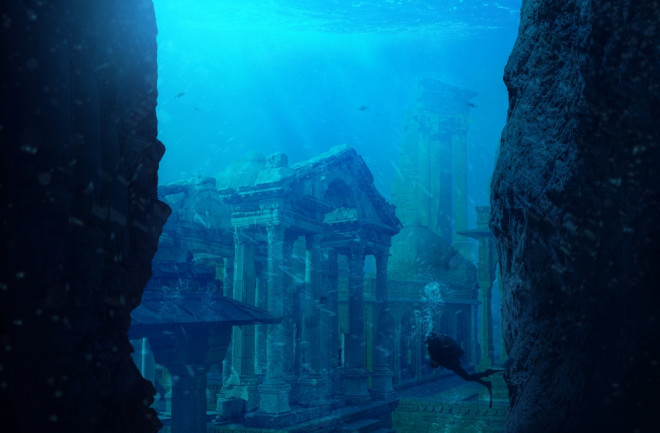The southern polar regions are a forbidding place. Antarctica’s harsh climate and thick ice coverage have made archaeological explorations — or explorations of any kind — exceptionally challenging. This has added a sense of mystery to various theories that humans could once have occupied the continent as a permanent civilization.
Scientists, however, have given a decidedly chilly reception to the prevailing hypotheses. Let’s go through them one-by-one.
Historic (and Hypothetical) Maps
Perhaps the oldest and most frequently cited piece of “evidence” for the possibility of an ancient civilization in Antarctica is the Piri Reis map, which was drawn by the eponymous Ottoman sailor and cartographer in 1513. The map illustrates a relatively accurate coastline of South America. It also hints at the presence of a landmass where Antarctica is, albeit one with no ice.
The outline of the supposed Antarctic depiction more closely resembles the physical land of the Antarctic continent than it does the ice pack, which stretches out into the ocean beyond the land. So, if Piri Reis did manage to make it that far south, he should have drawn the outline of Antarctic ice, not the land — unless, of course, he had some special knowledge that others lacked.
In addition to an unfrozen Antarctica, the map features other details that have led some minds to speculate that Piri Reis’ cartographic knowledge must have been derived from even earlier maps or documents (now lost to time) created by some unknown but highly advanced civilization who explored the world long before our recorded history. These earlier people must have visited and possibly inhabited Antarctica before it froze over. Proof that Antarctica was once populated!
Or not. In fact, the “Antarctica” that Piri Reis depicted was likely hypothetical — it was widely believed for centuries that the world ought to include a southern continent to balance out the landmasses on the other side of the world. Piri Reis was hardly the first to incorporate that belief into his work.
Read More: The Antarctic Ice Sheet Formed by Ideal Coincidence
Thanks to ice core research, we now know that, while there did indeed turn out to be a southern continent, that continent was last free of ice about 15 million years ago. The very age of Antarctica’s ice sheets goes against every other theory of ancient Antarcticans because scientists think that Homo sapiens have only been around for a few hundred thousand years.
If humans did establish colonies at the South Pole, they could only have done it when it was completely covered in ice. That seems an improbable environment in which people could keep themselves warm or find and consume enough calories to stay alive. The venerability of the ice sheets also cancels out any chance that some previously unknown human civilization, no matter how advanced, could have recorded information about an ice-free Antarctica that somehow made its way into the Piri Reis map. That the map actually includes such a depiction is mere coincidence, scientists have since determined.
Southern Pyramids
Back in 2016, an unnamed pyramid-shaped mountain in Antarctica went viral with some Internet users claiming that it must be a relic of a bygone civilization. Others meanwhile posited that aliens deserved credit for the peculiar monolith.
Experts, however, had a much more straightforward explanation. Freeze-thaw erosion — in which water enters cracks in the rock and then freezes and expands overnight, enlarging cracks and causing parts of the rock to break off — is the most likely cause for the shape that human eyes construed as pyramidal. Most mountains are made up of different rock types, which erode at different rates to create an irregular shape. “It suggests, since it came out so evenly, that the rock type is fairly uniform,” Eric Rignot, a professor of Earth system science at the University of California, Irvine, told Live Science. “This is just a mountain that looks like a pyramid.”
Undaunted by evidence, logic, or the critical thinking of scientists, some people have continued to advance pyramid theories based on what they call anomalies in satellite imagery of the continent, which to their eyes suggest more yet-to-be discovered artifacts and ruins from a time gone by.
Read More: What If Earth Hosted an Industrial Species Before Humans?
Experts, however, say these anomalies are again likely to be explained by geological processes, just like the pyramid mountain. Scientists still don’t know as much as they’d like to about Antarctica, but they know enough to believe that these anomalies are more likely to be evidence of subglacial lakes or unusual ice formations than any kind of structures made by some heretofore unknown intelligent race. The tools that researchers have at their disposal to study this remote continent haven’t revealed anything suspicious. Deep-penetrating radar, for example, has not uncovered any proof to back up claims of ancient human activity in the area.
Antique Anecdotes
Other theories, more speculative in nature, have drawn on historical testimonies and records. This argument relies on vague references to territories that lie beyond the explored world, where mysterious civilizations could have settled in some mythical Atlantis-like continent, now long gone or radically altered by time. These anecdotes, or folk memories, are evidence that people from centuries ago knew about Antarctica, say proponents of the theory. But these stories are often vague, and all too typically lack any empirical basis to assert such a claim. European and Asian talk of an as-yet unmapped territory could just as easily have referred to Australia or Oceania. Most scientists and historians feel comfortable dismissing this evidence as pure conjecture. You should, too.
Read More: The Most Interesting Archaeological Finds Discovered in Antarctica

